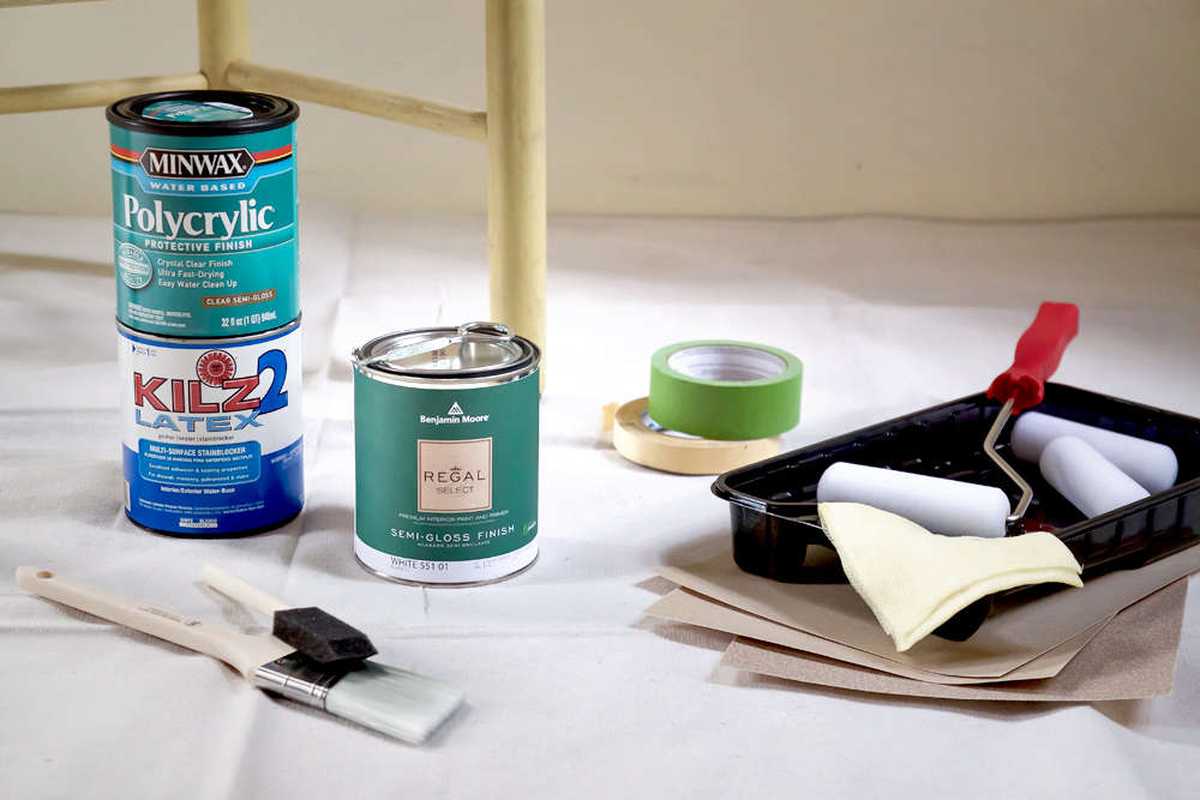
Painting furniture can be an exciting and rewarding DIY project, but it’s essential to be well-prepared before you start. To help you get ready for your furniture painting venture, here are the 7 crucial supplies that you should have on hand before getting started:
Sandpaper or a Sanding Block
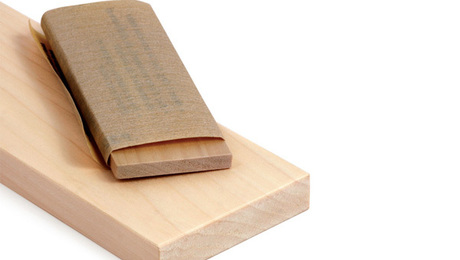
The first step in painting any piece of furniture is to ensure that the surface is smooth and free of old paint or varnish. This is where sandpaper or a sanding block comes in.
You’ll need various grits, starting from a coarse grit to remove the old finish and moving to a finer grit to smooth out the surface.
For most furniture painting projects, starting with a 60 or 80-grit sandpaper and finishing with a 150 or 220-grit should do the trick. Sanding not only removes old finishes but also helps to create a surface that the new paint can adhere to, ensuring a long-lasting finish.
Primer

Don’t skip the primer! Primer is essential, especially if you’re painting over a darker color or working with unfinished wood. It helps to hide the original color and provides a smooth, uniform surface for the paint to adhere to.
Some primers also prevent stains from bleeding through your new paint job. If you’re painting a piece of furniture that will see a lot of wear and tear, like a dining table or a chair, consider using a stain-blocking primer for added durability.
Quality Paintbrushes and Rollers
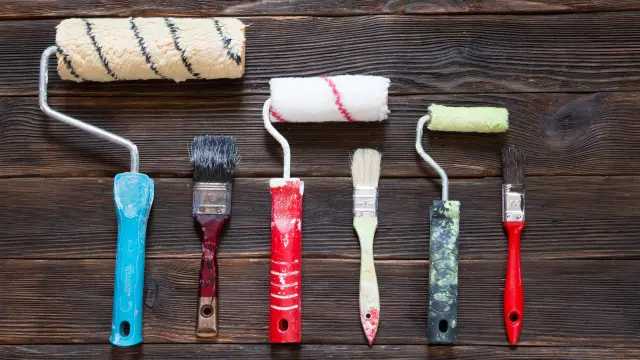
Investing in good-quality paintbrushes and rollers will make a significant difference in the finish of your furniture. Cheap brushes can leave bristles or brush marks on your piece, ruining the smooth finish you’re aiming for.
For most furniture pieces, a combination of a small roller for large, flat surfaces and a good-quality synthetic brush for detailed areas works best. Remember, the type of paint you’re using will dictate the kind of brush or roller you need.
For example, synthetic brushes are typically best for latex paints, while natural bristles work well with oil-based paints.
Paint
Choosing the right paint is crucial for your project. Furniture paint comes in various types, including latex, chalk, milk, and oil-based paints.
Each type has its advantages. Latex paint is durable and easy to clean, making it a good choice for furniture that will be used regularly.
Chalk paint provides a unique, matte finish and doesn’t require much prep work. Milk paint, which is environmentally friendly and gives a charming, antique look, is ideal for vintage pieces. Meanwhile, oil-based paints are durable and have a smooth finish but can be tricky to work with and require longer drying times.
You want to consider the use and placement of the furniture and choose a paint that suits both your style and the piece’s functionality.
Sealant or Topcoat
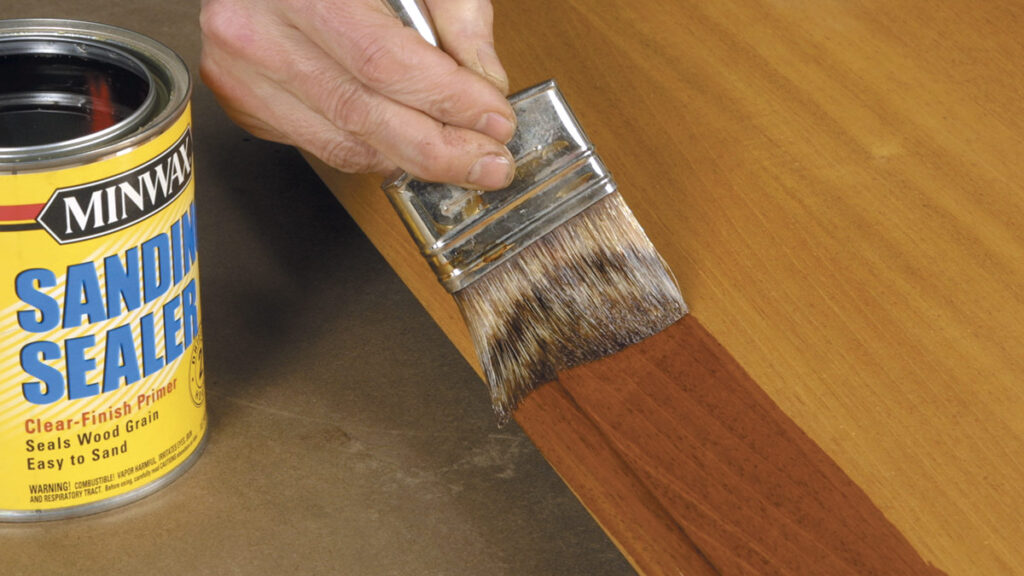
Don’t forget the sealant or topcoat. This is especially important if you’re using chalk or milk paint, which typically requires a protective finish. A sealant will protect your freshly painted furniture from scratches, stains, and water damage.
You can choose from various finishes, like matte, satin, or glossy, depending on the look you’re going for. Water-based polyurethane is a popular choice as it dries quickly and doesn’t yellow over time.
However, for a more durable finish, especially on pieces that will see a lot of wear, an oil-based sealant might be the better option.
Painter’s Tape
Painter’s tape is a must-have for achieving clean, professional-looking lines and protecting areas of the furniture that you don’t want to paint. It’s especially useful for projects that involve multiple colors or when you want to maintain the original wood finish on certain parts of the piece.
Unlike regular masking tape, painter’s tape is designed to prevent paint from bleeding under the tape and won’t leave a sticky residue when removed. Apply the tape carefully along edges, glass panels, or any decorative details you wish to keep paint-free.
Remember to remove the tape shortly after painting, before the paint completely dries, to avoid peeling off any fresh paint.
Drop Cloth or Plastic Sheeting
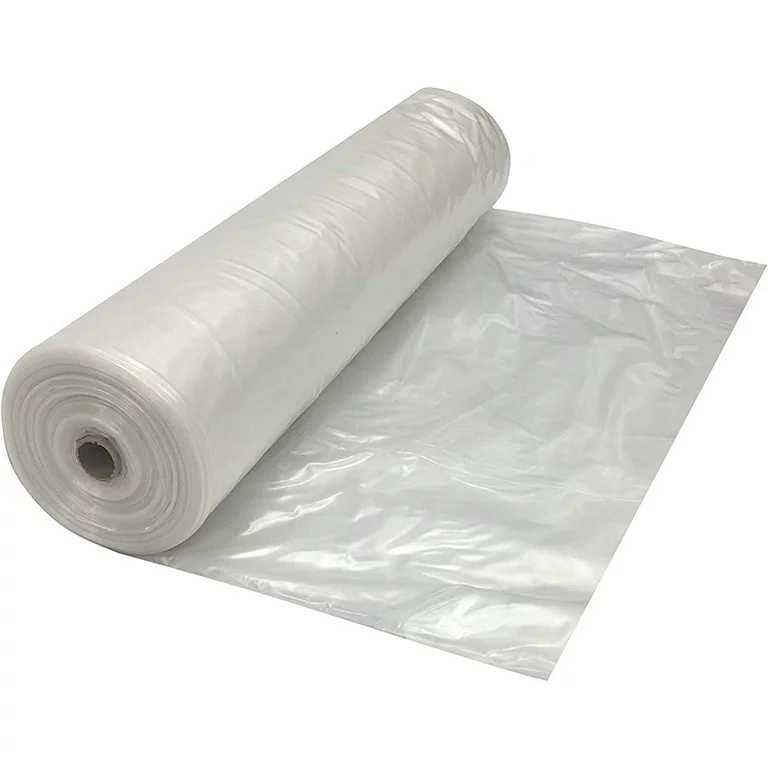
Paint can get messy, so it’s important to protect your workspace. A drop cloth or plastic sheeting laid on the floor or over any nearby furniture will catch any drips or spills, making cleanup much easier.
Drop cloths come in various materials, like canvas or plastic. Canvas cloths are reusable and less slippery than plastic, providing a safer surface to work on, but plastic sheeting is waterproof and inexpensive.
Choose the type that best suits your needs and workspace. Properly covering your work area not only keeps things clean but also allows you to focus on the painting without worrying about making a mess.
Conclusion
Having the right supplies before you start painting furniture can make all the difference in the outcome of your project.
By being prepared with these five essential items – sandpaper, primer, quality brushes and rollers, the right type of paint, and a sealant – you’ll be well on your way to transforming an old piece of furniture into something beautiful and unique.
Remember, the key to a successful furniture painting project is in the preparation. Take your time with each step, and you’ll be rewarded with a piece of furniture you can be proud of.
